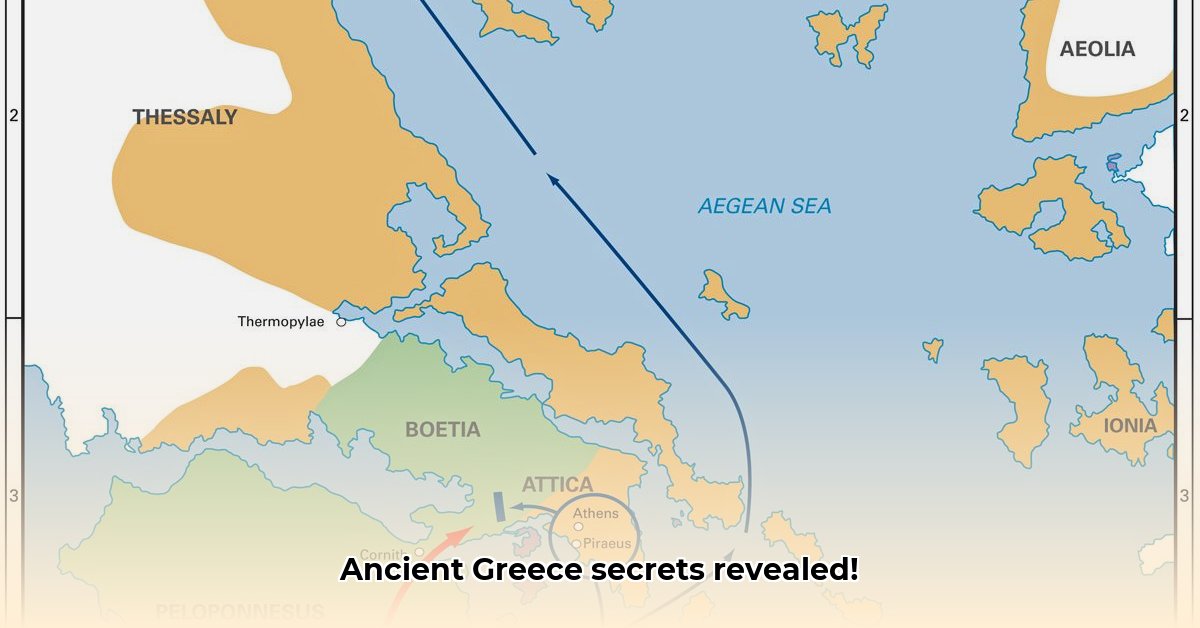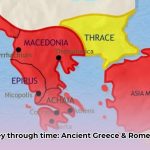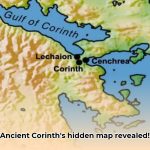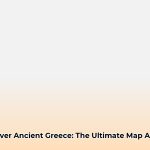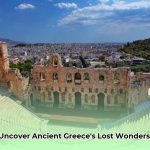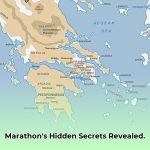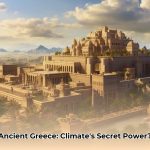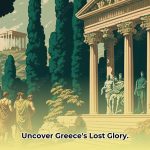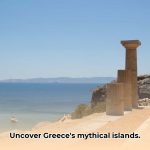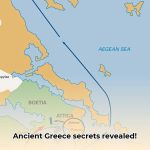Uncover the rich history of the Peloponnese peninsula in Greece, more than just a scenic landscape. This region is a captivating historical narrative waiting to be explored! Journey through time to witness the evolution of civilizations, significant battles, and cultural transformations. By studying ancient maps, we piece together the puzzle of its vibrant past, revealing the rise and fall of empires and their enduring legacies. See a broader view of Ancient Greece here. Join us on a historical exploration, utilizing maps, archaeological discoveries, and ancient writings to unlock the region’s secrets. We also provide practical advice for planning your own adventure in the Peloponnese, ensuring an immersive experience of its heritage while promoting its preservation for future generations.
Peloponnese Ancient Greece Map: A Journey Through Time
Embark on a captivating journey through the annals of history, using ancient maps as our compass to navigate the fascinating story of the Peloponnese. Nestled in southern Greece, this peninsula has been the stage for the ascent and decline of empires, the convergence and fusion of cultures, leaving behind a remarkable legacy that continues to influence the region today. Explore the historical cartography and evolving landscapes of this enchanting land.
Mycenaean Greece: Unveiling the Bronze Age
Envision a journey back to 1600 BCE. While precise maps were nonexistent, archaeological excavations offer fascinating glimpses into the Mycenaean civilization. Early maps reveal settlements concentrated around Mycenae and Pylos, major centers of power during that era. These sophisticated societies boasted impressive palaces and extensive trade networks spanning the Mediterranean. Skilled artisans crafted exquisite pottery and impressive goldwork, showcasing their advanced craftsmanship. However, around 1100 BCE, the Mycenaean civilization mysteriously collapsed. The causes of this decline remain a subject of intense historical debate. Was it due to invasions, climate change, internal conflicts, or a combination of these elements? Ongoing research continues to uncover new possibilities, making this a story that is far from concluded. What were the pivotal factors that contributed to the demise of this once-great civilization?
Classical Greece: The Rise of Sparta, Athens, and the Peloponnesian War
Leap forward to the era of Classical Greece (500-323 BCE), when maps become more detailed and informative. The Peloponnese was not a unified kingdom but a collection of independent city-states, each driven by its own ambitions and rivalries. Sparta, a formidable military power, dominated much of the southern Peloponnese, its influence clearly marked on the maps of that time. However, peace was disrupted by the Peloponnesian War (431-404 BCE), a brutal conflict between Athens and Sparta. Ancient maps transformed into battle maps, illustrating territorial shifts, changing alliances, and the war’s devastating impact across the peninsula. The war’s profound effects on society and culture continue to be researched, exploring how prolonged conflict reshaped daily life in the Peloponnese and ultimately influenced the region’s future trajectory.
Macedonian and Roman Rule: The Transformation of Empires
Following the Peloponnesian War, the landscape shifted again. Macedon, led by Alexander the Great, ascended to prominence and expanded its dominion into the Peloponnese. Subsequently, the Roman Empire arrived, marking a transition from independent city-states to a more structured Roman province. Roman rule brought new administrative systems, infrastructure projects such as roads and aqueducts, and Roman architectural influences. Consider the human impact of these changes on daily life, with individual communities experiencing benefits, hardships, or a combination of both. Ongoing research promises to further illuminate these dynamics.
Byzantine, Frankish, and Ottoman Eras: A Cultural Fusion
The ensuing chapters in the Peloponnese’s history involve the Byzantine Empire, Frankish crusaders, and the Ottoman Turks, each leaving an indelible mark. Maps from these periods illustrate fluctuating boundaries resulting from conquests and conflicts, while also revealing a fascinating interplay of cultures. Byzantine architecture coexisted with earlier Greek structures, Frankish castles dotted the landscape, and Ottoman influences permeated daily life. The Peloponnese’s unique cultural blend arose from a gradual fusion of elements over centuries, creating a rich tapestry that can still be observed today.
Modern Greece: Echoes of the Past
Today, the Peloponnese is an integral part of modern Greece, a vibrant fusion of ancient history and contemporary life. Thriving tourism draws visitors to explore its breathtaking scenery, ancient ruins, and historical sites. While a modern road network facilitates travel, ancient sites remain remarkably preserved alongside modern development, underscoring ongoing preservation efforts. However, questions persist about the long-term effects of growth on these areas, and the challenges presented by the juxtaposition of ancient and contemporary life. Ongoing strategic plans aim to balance preservation with progress and harmonious coexistence between modern infrastructure and ancient ruins.
A Timeline of Transformations: The Peloponnese Through the Ages
| Period | Key Events and Characteristics | Map Changes |
|---|---|---|
| Mycenaean (c. 1600-1100 BCE) | Palatial centers, the Linear B script, thriving trade. | Clusters of settlements around palaces, with limited territorial extent. |
| Classical (c. 500-323 BCE) | The rise of Sparta and Athens, the Peloponnesian War, independent city-states. | Defined city-state territories, shifting boundaries due to conflict. |
| Roman (146 BCE – 395 CE) | Roman conquest, the establishment of the Achaea province. | Roman administrative divisions become prominent. |
| Byzantine (395-1460 CE) | Part of the Byzantine Empire, administrative shifts. | Shifting boundaries reflect varying degrees of stability. |
| Ottoman (1460-1821 CE) | Ottoman rule, cultural transformations. | Ottoman administrative units and their influence on boundaries. |
| Modern (1821-Present) | Independence, tourism, ongoing archaeological discoveries. | Modern administrative divisions, emphasis on historical sites. |
The history of the Peloponnese, as revealed through its evolving maps, is a vibrant and ever-changing narrative that showcases the remarkable resilience of this land, where ancient echoes continue to resonate in the present day, captivating and inspiring all who explore its depths.
Comparing Spartan and Mycenaean Economies
Delve into the economic complexities that distinguished the Spartan and Mycenaean civilizations in ancient Greece.
Key Points:
- The ancient Greek economy encompassed agriculture, craft production, and trade.
- Direct comparison of Spartan and Mycenaean economic output presents challenges due to limited data.
- Archaeological discoveries, surviving texts, and trade route analysis offer indirect comparisons.
- Understanding the distinct societal structures and their economic impact is essential.
- The unique economic systems of Sparta, reliant on Helot labor, and Mycenae, with its palace-centered economy, necessitate separate examinations before comparison.
The Mycenaean Economy: A Palace-Centered Powerhouse
Envision a world dominated by magnificent palaces. During the Bronze Age, the Mycenaean civilization flourished in the Peloponnese from 1600 to 1100 BCE, with its economy centered around these palaces, serving as hubs of administration and production. Agricultural surpluses channeled through the palace system fueled their power. Artisans under palace control produced exquisite goods for the elite and for trade. Assessing their economic output involves analyzing archaeological evidence, such as the quantity and quality of pottery, workshop remnants, and the distribution of goods, painting a picture of a sophisticated, yet centralized system. Quantifying the overall economic output remains a challenge.
The Spartan Economy: A Unique Model of Helot Labor
Centuries later, Sparta emerged as a dominant force in the Peloponnese, with an economy vastly different from that of Mycenaean times. Sparta’s economy was based on the exploitation of the Helots, a subjugated population who worked the land. This system generated agricultural surpluses, allowing Spartan citizens to focus on warfare. Compared to other Greek city-states, Sparta’s economy was less focused on large-scale trade or sophisticated craftsmanship. Comparing Spartan and Mycenaean economic output requires considering their contrasting organizational principles. The absence of a centralized institution like the Mycenaean palaces means that measuring Spartan wealth involves analyzing the scale of Helot agriculture and the lifestyle of Spartan citizens.
Methodological Challenges: Comparing Incomparables
Direct comparisons are problematic due to the lack of comprehensive economic data available for modern times. However, analyzing available evidence allows for tentative conclusions based on the following considerations:
- Agricultural Output: Estimates of agricultural productivity, based on land area, agricultural techniques, and population sizes, provide a broad understanding of differing production capabilities, but fall short of a precise comparison.
- Trade Networks: The extent of trade networks, inferred from archaeological finds, offers insights. Mycenaean trade was extensive, reaching across the Aegean, while Sparta’s trade focus was less pronounced, directly impacting the assessment of their economic power.
- Technological Advancements: Evaluating technological advancements in agriculture and manufacturing provides another indirect measure. Did Mycenaeans possess more advanced tools or irrigation systems compared to the Spartans? Such a comparison would affect their productive capacity.
Reconstructing the Past: Limitations and Opportunities
Limitations are inherent due to the incomplete and fragmented record. However, ongoing archaeological excavations, the discovery of new inscriptions, and the refinement of analytical methods contribute to our understanding. Modern techniques, such as isotopic analysis of skeletal remains, provide surprising insights into diet and lifestyle, indirectly revealing economic realities, furthering future research.
Preserving the Peloponnese’s Mycenaean Architectural Heritage
Learn about the efforts to preserve the architectural heritage of ancient Greece, focusing on the Mycenaean period.
Key Points:
- The Peloponnese possesses archaeological treasures spanning millennia, from Mycenaean palaces to Roman theaters.
- Preserving the Peloponnese’s Mycenaean Architectural Heritage is crucial for understanding ancient Greece.
- Ancient maps provide insights into the region’s evolution.
- Collaboration among archaeologists, governments, and local communities is vital for long-term preservation.
- Sustainable tourism can balance economic benefits with heritage protection.
Mycenaean Marvels: A Golden Age in Stone
Step back in time to the Bronze Age when the Peloponnese thrived with the Mycenaean civilization, masters of cyclopean masonry (stonework built with massive, irregular blocks). Imposing citadels like Mycenae stood as testaments to their power. Palaces, tombs, and fortifications scattered across the peninsula revealed tales of a sophisticated society, showcasing artistry in intricate frescoes and engineering prowess in architectural feats. Preserving this heritage ensures that these magnificent structures endure.
Classical Conflicts and Shifting Sands
While the Mycenaean civilization waned, the Peloponnese remained a pivotal player in the ancient world. Sparta rose to prominence during Classical Greece, and the Peloponnesian War reshaped the region’s political landscape, leading to the construction of new cities and the expansion of existing ones, leaving behind a divergent architectural style.
Roman and Byzantine Eras
The Roman Empire’s influence is evident in the well-preserved theaters and aqueducts, showcasing their engineering skills. The Byzantine Empire further enriched the region, constructing fortifications and churches that seamlessly blended Roman and Greek designs. The interconnected past is a powerful reminder of the architectural representation of history.
Ottoman and Modern Preservation
The Ottoman Empire’s presence is visible in coastal castles and fortifications. Each layer of history adds a unique dimension to the Peloponnese’s tapestry. Preserving the Peloponnese’s Mycenaean Architectural Heritage, alongside other historical sites, requires careful restoration techniques, sustainable tourism, and community engagement.
A Collaborative Future
The enduring legacy of the Peloponnese depends on our ability to protect its past through preserving physical structures and sharing their stories. Archaeologists, historians, and local communities must collaborate, and sustainable tourism practices offer opportunities to preserve sites while providing economic benefits for local populations, safeguarding centuries of history.
Sustainable Tourism Infrastructure in the Peloponnese
Discover sustainable tourism infrastructure developments that aim to balance economic growth with environmental and cultural preservation in the Peloponnese.
Key points:
- The Peloponnese region boasts a rich history evident in ancient maps and archaeological sites.
- The Sustainable Development Plan focuses on balancing economic growth with environmental protection and cultural preservation.
- A network of hiking trails aims to revitalize rural areas and draw tourists to lesser-known communities.
- The plan involves digital mapping, community engagement, and partnerships with social enterprises.
- Success depends on managing visitor flow, protecting the environment, and ensuring the long-term financial stability of the initiatives.
Ancient Foundation
The Mycenaean civilization’s influence is etched onto the landscape of the Peloponnese. Ancient maps hint at their powerful strongholds, and their legacy laid the groundwork for later Greek civilizations, influencing the future development of the region.
Classical Influence
The Classical period saw the rise of powerful city-states, notably Sparta and Athens. Their rivalry dramatically reshaped the region’s political map as battles raged, profoundly affecting the region’s development, leaving lasting impressions on its physical geography and its societal fabric.
Roman Development
Roman conquest brought significant change. Ancient roadways showcase the Romans’ engineering prowess, and the subsequent Byzantine era further enriched the Peloponnese’s cultural tapestry.
Cultural Tapestry
The Ottoman period added another layer of complexity. Architectural styles shifted, reflecting the influence of a new ruling power, and the region’s cultural richness remained undiminished, contributing to its unique character.
Sustainable Tourism Today
Modern Greece has embarked on a journey to balance preservation with progress, promoting responsible tourism through sustainable practices and community engagement. Meticulously planned and digitally mapped hiking trails encourage exploration while minimizing environmental impact, distributing economic benefits and revitalizing rural areas left behind by mass tourism.
- Explore the Marathon Ancient Greece Map: A New Perspective on the Iconic Battle - August 12, 2025
- Explore Ancient Greece Drawings: Styles, Periods and Enduring Examples - August 12, 2025
- Ever Wondered About Toxic Truths? Makeup in Ancient Greece Unveiled! - August 12, 2025
